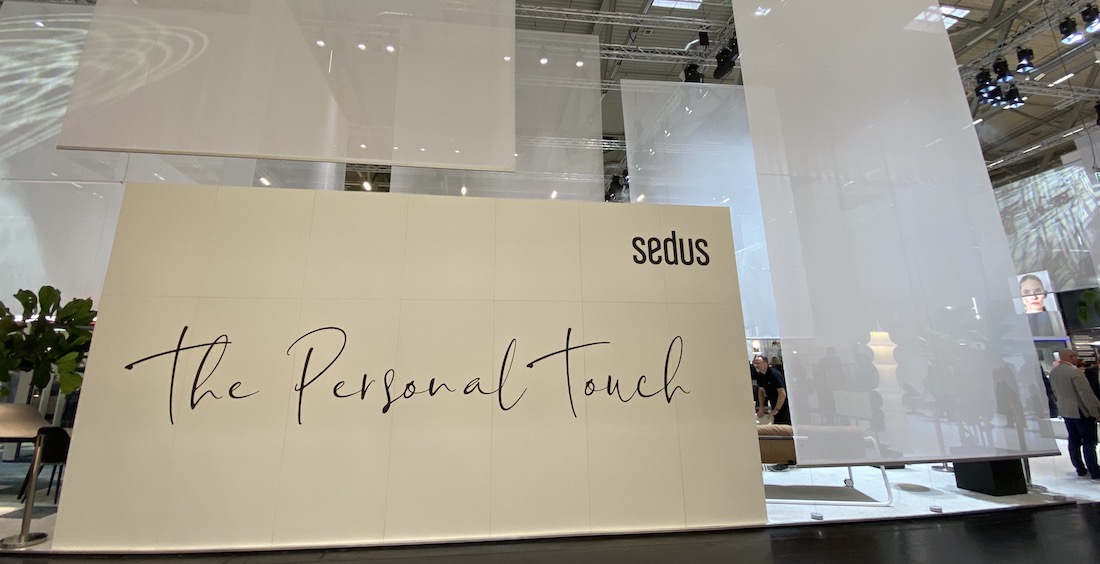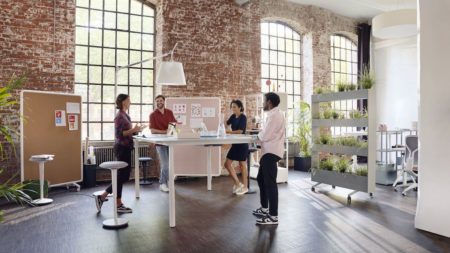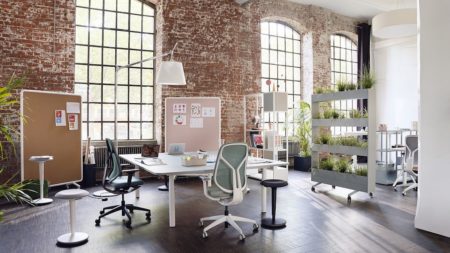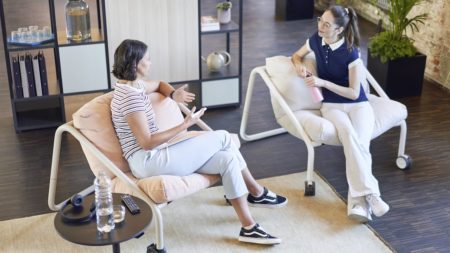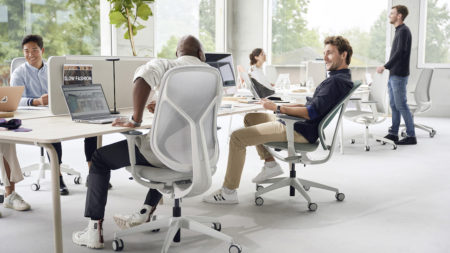
We meet Ernst Holzapfel, Sedus Marketing Manager, in the crowded Sedus stand of Orgatec entitled “The Personal Touch“, more than a slogan a true declaration of intent for the rethinking of the post-pandemic hybrid office: the new identity of the workplace is above all “social “, but also agile and smart.
This short video summarizes the main trends in progress and the answers office design can give to meet new needs.
A “new normal” is taking shape more and more clearly, which is not only home working, but above all hybrid office. The hybrid model, which most companies will continue to apply, however, includes new design concepts for the workplace.
The office must be increasingly attractive, comfortable, it must become a place of identity and offer contexts where people can meet and collaborate in the most spontaneous way possible.
The era of large open plan offices seems to be over. To offer a greater sense of security and privacy, the environments are now divided into different zones through modular elements – an example is the se: matrix storage / bookcase system – with a domestic mood that can be easily modified.
Because in the new office ecosystem, it is no longer people who adapt to the environment, but the environment that becomes more flexible to meet people’s needs and offer them ever greater well-being.
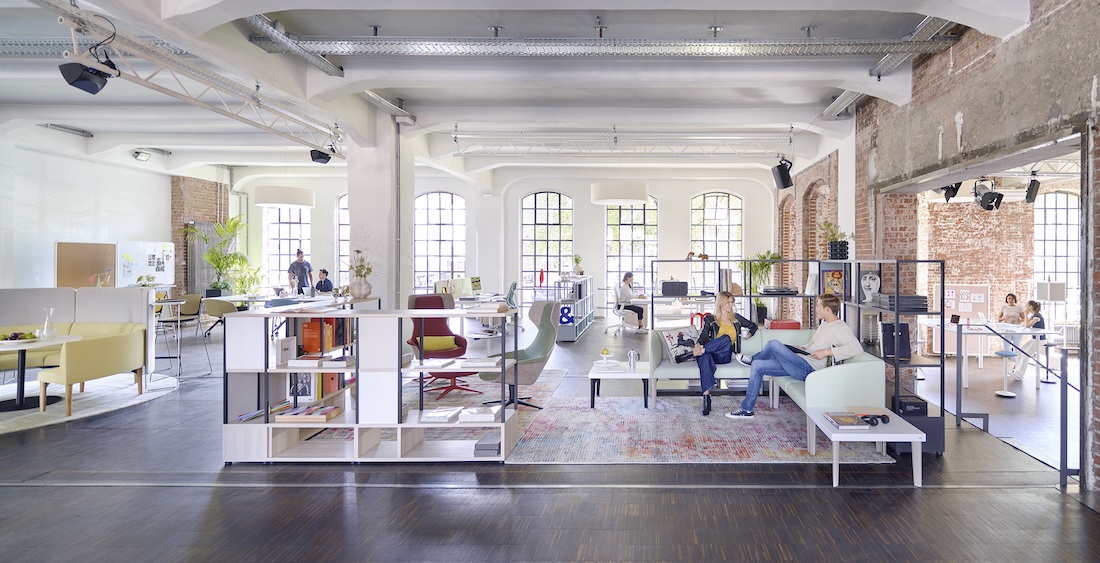
The furnishings are therefore lighter, on wheels, easily removable and transformable. As in a theatrical stage, blackboards, dividers, tables, chairs and sit-stand desks create sets that change throughout the day to provide adequate support for different activities.
Teamwork meetings that must allow communication between people in presence and remote participants in video conferences – an example is if: lab-, informal meetings that come to life on a sofa, moments of relaxation on a comfortable armchair, there is no lack of meetings that require greater confidentiality and concentration activities that are answered in phone boots and office pods for more people.
When the workstations are no longer assigned, but are shared upon reservation, the seat takes on greater importance, not only must it be ergonomic, but it must be configurable to offer personalized comfort. The concept of modularity is applied to the chair for a “tailor made” configuration: the new se: kit can be assembled in 1300 different combinations so that the user can really find his “perfect chair”.
To manage the complexity of these fluid work environments, new visions, new furnishings and even new technologies are needed.
Aware that smart working is a real competitive advantage, Sedus has entered into a partnership with Cisco aimed at optimizing workspaces and improving team collaboration both face-to-face and virtual.
The result is a symbiosis between interior design, furniture and communication: examples are the se: connects app and the smart locker se: hub.
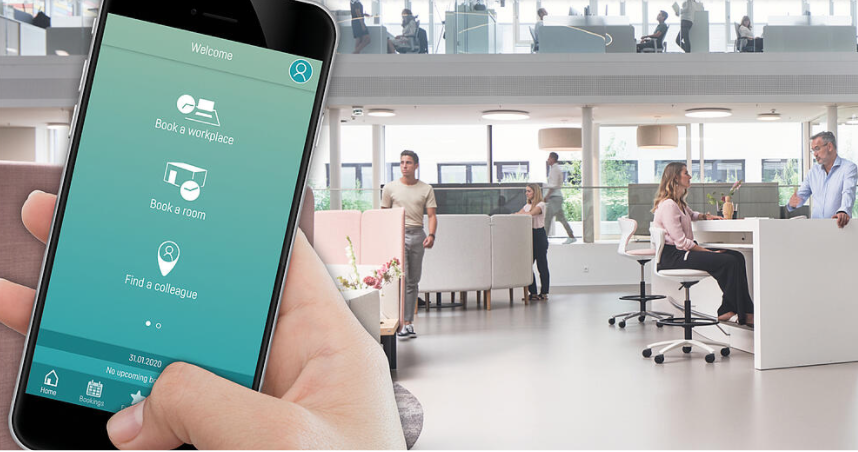
The integration between technology and furniture offers with se: connects an intelligent solution for the use and management of workstations in smart working environments.
The entire office floor plan with all workstations and work areas is stored in the se: connects app, displaying each occupancy and booking, which seats are occupied, booked or available.
You can see where each colleague is sitting to facilitate “team building” and with a few clicks, you can quickly find the right place for a concentration, creative or collaborative activity.
This “Personal Touch” approach is able to perfectly applying the Sedus “Productive Wellbeing” mission within a phygital workplace that becomes reality.
